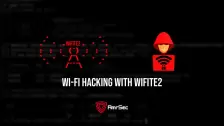Table of contents [Show]
Introduction:
Welcome to the world of zero-day vulnerabilities! Have you ever wondered about discovering your first zero-day exploit? In this article, we will cover everything you need to get started with zero-day exploits in both binary software and web applications. Whether you're a cybersecurity enthusiast or a seasoned professional, this guide will provide you with the knowledge and tools necessary to embark on your journey to uncovering zero-day vulnerabilities. So, grab a coffee and let's dive in!
Setting Up Your Environment:
Before we begin, it's crucial to set up a safe and controlled testing environment. Using virtual machines (VMs) can help create an isolated environment where you can safely test for vulnerabilities without affecting real-world systems. VMware and VirtualBox are excellent tools for setting up your virtual lab.
Installing VMware
- Download VMware Workstation Player from the official VMware website.
- Install VMware by following the installation wizard instructions.
- Create a new virtual machine:
- Open VMware Workstation Player.
- Select “Create a New Virtual Machine.”
- Choose the installer disk image (ISO) for the OS you want to install.
- Follow the prompts to complete the VM setup.
Zero-Day Exploits in Binary Software:
Binary software vulnerabilities can be challenging to detect but are incredibly impactful. To find zero-day vulnerabilities in binary software, we use specialized tools called fuzzers. Fuzzers work by bombarding an application with random inputs to find crashes and unexpected behaviors. Today, we'll be using AFL (American Fuzzy Lop), one of the most powerful fuzzing tools available.
Installing AFL:
- Update your package lists:
sudo apt-get update
- Install AFL:
sudo apt-get install afl
- Set up AFL:
- Download the source code of the target application you want to fuzz.
- Compile the target application with AFL instrumentation:
export CC=afl-gcc ./configure make
Using AFL:
- Prepare the input directory with sample inputs for AFL:
mkdir input_dir cp sample_input_file input_dir/
- Start fuzzing:
afl-fuzz -i input_dir -o output_dir -- ./your_application
- Monitor the results in the output directory for crashes and unexpected behaviors.
Zero-Day Exploits in Web Applications:
Web applications are frequent targets for attackers due to their widespread use and accessibility. Common vulnerabilities include Cross-Site Scripting (XSS), SQL Injection, Cross-Origin Resource Sharing (CORS), Insecure Direct Object References (IDOR), and Cross-Site Request Forgery (CSRF). Discovering these vulnerabilities often involves using powerful tools like Burp Suite, OWASP ZAP, and Acunetix.
Tools for Web Application Security Testing:
- Burp Suite:
- Download from the official PortSwigger website.
- Install and set up Burp Suite.
Use the Scanner tool to automatically find potential vulnerabilities in your web application.
- OWASP ZAP:
- Download from the OWASP ZAP website.
- Install OWASP ZAP and follow the setup instructions.
Use its automated scanners and manual testing tools to identify vulnerabilities.
Analyzing and Exploiting Vulnerabilities:
Once potential vulnerabilities are identified, it's crucial to analyze and exploit them responsibly. Interpreting results from fuzzers and web scanners involves understanding crash reports and security warnings. Creating proof-of-concept (PoC) exploits helps demonstrate the impact of the vulnerabilities.
Example of Analyzing a Crash
- Identify a crash report from AFL:
cd output_dir/crashes
- Use a debugger like GDB to analyze the crash:
gdb ./your_application core
- Develop a proof-of-concept exploit based on the crash analysis.
Ethical Considerations and Responsible Disclosure:
Ethical hacking is about making the digital world safer. Always disclose vulnerabilities responsibly and use your skills for good. Responsible disclosure involves reporting vulnerabilities to the affected parties and giving them time to fix the issues before making any public announcements.
- Check out: Mastering the eJPT Exam: Tips for Success
Conclusion:
Congratulations! You've taken your first steps toward mastering zero-day exploits. Remember, with great power comes great responsibility. Continue to practice ethical hacking and responsible disclosure. If you enjoyed this article, don't forget to follow our blog for more cybersecurity content. If you have any questions, feel free to reach out to us. Until next time, stay curious and stay secure!







